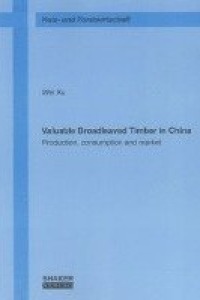
Liknande böcker
Interfaces in Coupling of Hydrogeological Modeling Systems
Bok av Wolfgang Gossel
This book examines systematically the methods of geological, hydro- and environmental geological as well as hydrological modeling systems and the possibilities of their coupling.The underlying modeling concepts can be distinguished into static and dynamic concepts according to their time dependency. The possibilities and strategies of the application of modeling methods belonging to these concepts have been changing in the last decades so that today statistical and descriptive methods are preferably used in static concepts and numerical methods are preferred in dynamical concepts.The methods of coupling models are described systematically based on the concepts and modeling systems. Different concepts were used to model the case studies "Subrosion Valley Unterwerra", "Untere Mulde/Fuhne" (both in Germany) and the Nubian Aquifer System (Egypt and parts of Libya, Chad and Sudan).The hydrogeological modeling systems in the focus of this study consider particularly the geology, soil water and the flow in the unsaturated and the saturated zone. Transport modeling in the saturated zone, hydrological modeling and environmental geological models are investigated only marginally. The coordination of available and needed data is enhanced by a high diversity of modeling systems, so that it is possible within some limits to choose a suitable modeling system according to the objectives. For the coupling of modeling systems it is most important, which modeling methods are used in the coupled systems, e.g. statistical methods are more flexible in geological modeling than constructive methods. In the case studies different modeling systems according to the main tasks were used and their preferences and special advantages according to the objectives are explained.The interfaces for the coupling of modeling systems are considered systematically and thus allow an evaluation. The most striking feature in coupling of modeling systems is their possibly unstable behaviour. The tighter and the more complex the coupling is implemented the higher will be in most cases the effort for a stabilization of the coupled models. This can be demonstrated best with the case studies of the Nubian Aquifer System and the Untere Mulde/Fuhne. Horizontal and vertical coupling are affected in a similar way.Also the comparison of models with coupled modeling systems and the reality (calibration, validation and sensitivity analysis) is influenced by the kind of coupling. Some kinds of coupling reduce the possibilities of calibration, sensitivity and error analysis.Prognostic modeling with coupled models will be more unstable in most cases and the number of boundary conditions and parameters will increase but the reliability will increase according to the deterministic definitions.
Visa pris inkl. frakt Inkl. frakt
Interfaces in coupling of hydrogeological modeling systems
356 kr
Finns i lager
Interfaces in Coupling of Hydrogeological Modeling Systems
519 kr
Ej i lager







